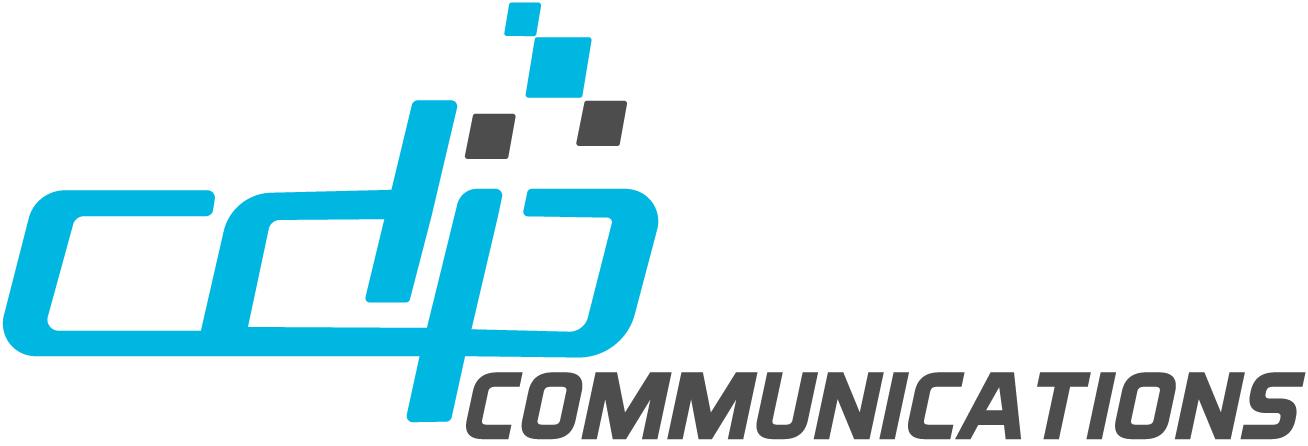Best Practices for Document Design Accessibility starts with the initial design of a document and continues to the final format and distribution of that document. At CDP, we help organizations transform their digital documents into the accessible PDF/UA format. But what about the initial design and layout of the document? We are often asked if there are recommended best practices. Design your digital documents to be accessible to everyone, regardless of their abilities. Focus on layout, design, color use, images, tables, and fonts. Consequently, accessible documents enhance user experience and make information available to a broader audience. By following these practices, you ensure your content reaches and benefits more people. This article will explore best practices for accessibility in document design.
While CDP offers a variety of software applications to create accessible PDF/UA, this document will focus on the initial design of a document for accessibility.
Starting with Accessible Source Documents
Starting with a well-structured source document is the foundation of best practices accessibility document design. Ensure that you have:
- Proper heading styles for clear structure
- Descriptive alt text for images
- Meaningful hyperlinks
- Accessible fonts and colors
- Language that is easy to understand
Using an accessible source document ensures that the conversion to PDF/UA retains accessibility features. It simplifies the process and sets a strong foundation for creating inclusive documents.
Simple, Clear, and Concise Language
Wording that is simple, clear, and concise will make documents easier to understand and help with accessibility. Follow these tips to make documents easier to understand:
- Keep sentences short: Short sentences are easier to read and understand.
- Use active voice: Active voice makes sentences direct and easy to follow. Example: “The team completed the project” (active) vs. “The project was completed by the team” (passive).
- Avoid jargon: Use common words that most people know. Remember that some readers may just be learning about the topic. They will feel left out as they are not familiar with the jargon and terminology.
- Explain technical terms: Only use technical language when necessary, and always provide explanations.
- Simplify reading level (if possible): The Web Content Accessibility Guidelines (WCAG) recommends writing text at a “lower secondary education” reading level, which is about grade 9. This makes content easier for a wider audience. You can refer to the WCAG guidelines on reading levels
Document Structure: Headings
Give your document a clear, descriptive title or main heading that reflects its content. This helps all users quickly understand its purpose.
Use proper heading structures:
- Heading 1 for the main title
- Heading 2, Heading 3, etc. for sections and subsections
Organize your headings by hierarchy/nested levels to clearly show your document’s structure. Avoid skipping heading levels to maintain logical navigation for screen readers.
Setting Document Language
Set the document language in the properties to ensure screen readers interpret the text correctly. This is crucial for documents that may be accessed by users who speak different languages.
Alternative Text for Images: Enhancing Visual Accessibility
Describe all images, charts, graphs, and non-text content using “alternative text” or “alt text”. Alt text should:
- Accurately describe the content and function of the image
- Be clear and concise
- Avoid phrases like “an image of” or “a graphic of,” as screen readers already identify these elements
- Do not depend on automatically generated descriptions as they may not be accurate
- Remember, the PAC checker will only confirm the presence of Alt Text not the accuracy of it.
Alt text ensures users who can’t see the images will still get the information they convey. As a result, it provides equal access to content.
Hyperlinks: Creating Meaningful Connections
Descriptive Link Text
Ensure that hyperlinks have descriptive and meaningful link text. Avoid generic labels like “click here” or “read more.” Instead, use text that clearly indicates the link’s destination or purpose, such as “Read the Accessible Canada Act for more information.”
Embedding URLs
Do not copy and paste URLs directly into the document. Embed them behind descriptive text to enhance readability and accessibility.
Reading Order: Ensuring Logical Flow
Ensure your document’s reading order makes sense. Most documents usually flow top-to-bottom and left-to-right, but this isn’t always the case. Some content may be organized differently, with nearby sections having different logical connections. Always check that the reading order aligns with the document’s structure and intent.
Tables: Using Tables Effectively
Tables should be used to present data, not to change aesthetic layouts. Ensure tables are:
- Formatted with column and row headers
- Tagged correctly for accessibility
- Free of merged (unless you have axesWord) or empty cells, and rotated text
Tables should enhance the understanding of data without creating barriers for users with disabilities.
Fonts and Layout for Enhancing Readability
Readable Fonts
Sans-serif (“no serif”) fonts are a typeface without the small decorative lines, or “serifs,” at the ends of each character stroke. These fonts with cleaner lines are easier to see on a computer or mobile screen and consequently are more accessible. Choose Arial, Aptos, Calibri, or other sans-serif fonts.
A serif font has small decorative strokes at the ends of each letter. Serif fonts like Times New Roman and Garamond can be difficult to read on screens. This can be even more challenging for people with visual impairments or dyslexia.
To make your documents easier to read and more accessible, use simpler, sans-serif fonts instead.
Font Size and Style
Use a font size of 12 points or larger to ensure visibility. Avoid using italics, and excessive bold text.
All Capital Letters:
Avoid use of all capital letters. All caps can reduce the ability to recognize word shapes, which slows down reading speed. This is particularly challenging for individuals with dyslexia, who rely on word shapes to read efficiently. Additionally, screen readers might interpret all caps as acronyms, leading to confusion. All caps also convey a tone of shouting, which can be off-putting or misinterpreted. For better readability and accessibility, it’s best to use standard capitalization.
Text Alignment and Spacing
Avoid justifying text, as it can be difficult to read for some users. Justified text aligns both the left and right edges, creating a clean look but causing accessibility issues. Uneven spacing between words makes reading difficult, especially for people with dyslexia. It can also create distracting “rivers” of white space. Screen readers may struggle with the irregular spacing, leading to misinterpretation. For users with low vision, justified text can reduce readability and increase cognitive load. Therefore, it’s better to use left-aligned text for better accessibility.
Expanded Text:
The writing style where all capital letters are used, with spaces between each letter and triple spaces replacing regular spaces, can be described as “spaced-out text” or “expanded text.” This style is often used for emphasis or artistic effect and can make the text appear more visually striking or significant. Do not use this. Here is an example of this style:
A V O I D T H I S S T Y L E
Colors:
Sufficient Color Contrast
Make sure your text stands out from the background by using colors for font and background that are sufficiently contrasting. This makes it easier to read.
Sufficient color contrast should be provided (at least 4.5:1 ratio) for regular text. Black text on a white background has the highest readability. Warm and cold colors make for the best color contrast.
Use tools like WebAIM’s Contrast Checker
Color cannot signify meaning:
Color must not be the only way of presenting information. If color signifies meaning, incorporate additional visual cues like a symbol or text to convey the information.
Hyperlinks: Creating Clear Connections
Formatting Hyperlinks
Use underlining or a different font color to distinguish hyperlinked text from plain text. Avoid copying and pasting URLs directly into the document. Embed URLs behind descriptive text to enhance readability.
Providing Descriptive Link Text
Use descriptive text for hyperlinks to explain where the link will take the reader. For example, “Read the Accessible Canada Act for more information” instead of “Click here to learn more.”
Lists & Nested Lists
Use the bullet list or number list functions in your word processing software to create indented lists. Do not use the “tab” key to indent content in lists or hard-code the bullet characters. The screen readers cannot navigate such features or recognize this as a list.
Watermarks and Background Images: Avoiding Visual Barriers
Avoid using watermarks or images behind text in documents. These elements can reduce the contrast between text and background, making the document difficult to read.
Table of Contents: Facilitating Navigation
For longer documents with multiple sections or chapters, include a table of contents. Use your word processing software to create the table automatically, linking it to properly formatted headings.
Accessibility Checking Tools: Ensuring Compliance
Use built-in accessibility checking tools in your MS Word and PowerPoint software to identify and address accessibility issues. While these tools do not guarantee complete accessibility, they provide valuable guidance.
For the finalized PDF/UA use the PAC 2024 to validate against the PDF/UA ISO 14289 standard, Matterhorn Protocol and the WCAG standard.
Comprehensive Review: Document Design
Review your document manually to ensure a more complete level of accessibility. Check for issues like color contrast, text styling, logical order, and skip-level headings.
Always review finalized PDF/UA using screen reader such as NVDA or JAWS.
Creating Accessible Slide Decks / PPT
Apply the principles of accessible document design to presentation slides. Use programs like Microsoft PowerPoint and Google Slides, which include features to support accessibility.
Slide Design Tips
- Start with a design theme that offers strong color contrast
- Use sans-serif fonts in a large size (at least 18 points)
- Use built-in spacing features instead of manually skipping lines
- Ensure each slide has a short, unique title
- Limit information on slides to 3-7 bullet points
- Include captions or alt-text descriptions for images
Accessible PDF UA Conversion
When converting a document to PDF/UA: CDP offers several powerful tools designed to ensure your documents remain accessible:
- axesWord: This tool integrates with Microsoft Word to create fully accessible PDF/UA documents directly from Word files.
- axesSlide: Ensure your Power Point presentation slides are accessible when converting them to PDF format.
- MadeToTag: A plugin for Adobe InDesign that simplifies the creation of accessible PDF/UA documents.
- ADEPT UA: CDP’s advanced solution for automated high-volume document accessibility remediation, ensuring all types of enterprise digital documents meet accessibility standards.
Conclusion: Commitment to Accessibility
Incorporating best practices for accessibility in document design ensures that your content is accessible to everyone. By starting with a well-structured source document and using clear, concise language, you make information more accessible. Proper headings, descriptive alt text, and meaningful hyperlinks are essential. Use sans-serif fonts for better readability and avoid justified text to enhance accessibility. Implement these strategies to improve user experience and compliance with accessibility standards. Following these Best Practices for Accessibility in Document Design makes your documents inclusive and user-friendly.
Accessibility is an ongoing process. Continually educate yourself about the latest standards and tools, test your documents with real users, and seek feedback from individuals with disabilities. This approach will help you create truly inclusive documents that meet the needs of all users.
By implementing these best practices, you contribute to a more inclusive digital world, where information is accessible to everyone, and no one is left behind.

Not sure if your existing documents are accessible or not? We will evaluate them for free! It’s easy. Upload a file and we will test it for you.




